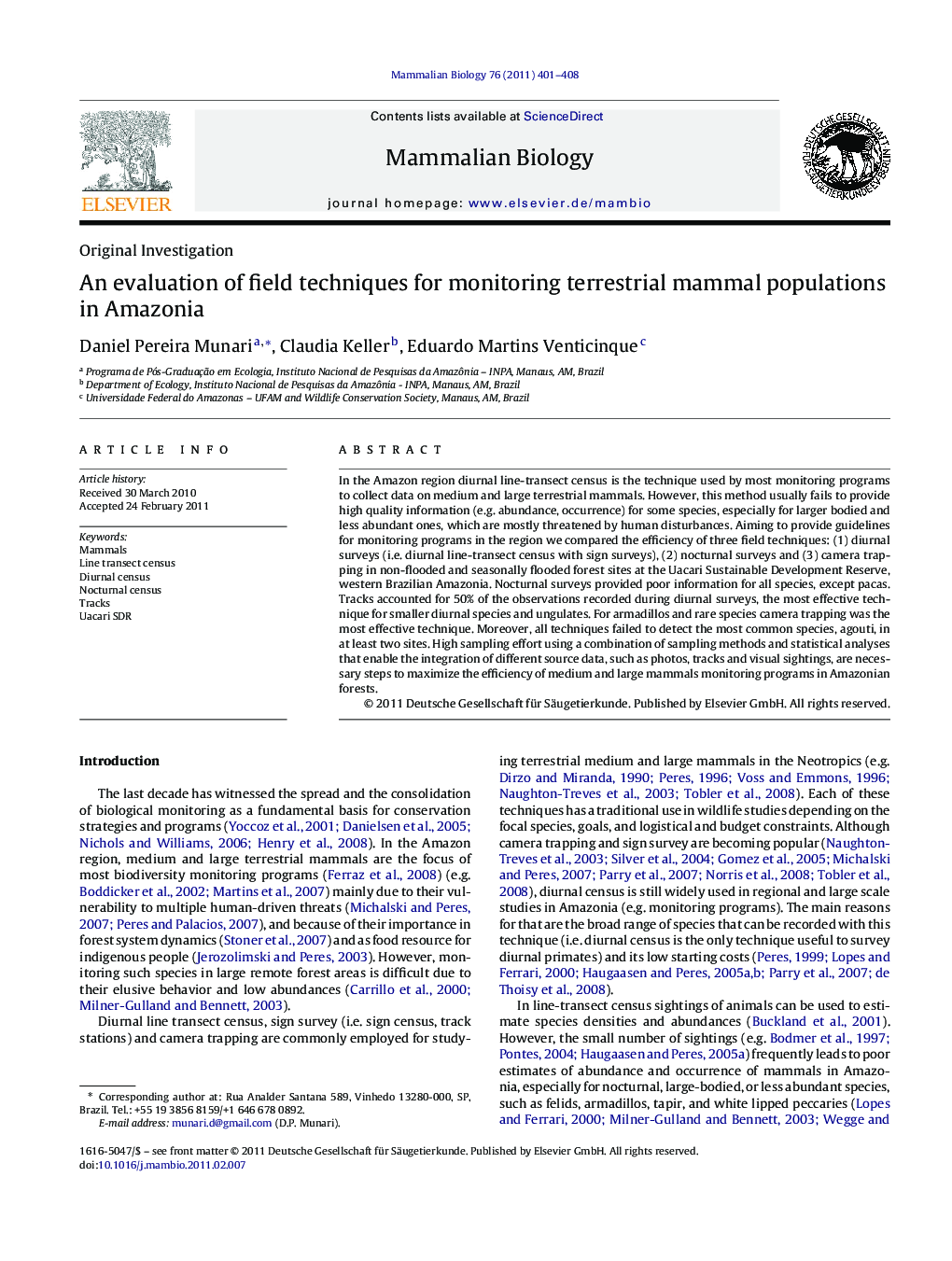| Article ID | Journal | Published Year | Pages | File Type |
|---|---|---|---|---|
| 2194058 | Mammalian Biology - Zeitschrift für Säugetierkunde | 2011 | 8 Pages |
In the Amazon region diurnal line-transect census is the technique used by most monitoring programs to collect data on medium and large terrestrial mammals. However, this method usually fails to provide high quality information (e.g. abundance, occurrence) for some species, especially for larger bodied and less abundant ones, which are mostly threatened by human disturbances. Aiming to provide guidelines for monitoring programs in the region we compared the efficiency of three field techniques: (1) diurnal surveys (i.e. diurnal line-transect census with sign surveys), (2) nocturnal surveys and (3) camera trapping in non-flooded and seasonally flooded forest sites at the Uacari Sustainable Development Reserve, western Brazilian Amazonia. Nocturnal surveys provided poor information for all species, except pacas. Tracks accounted for 50% of the observations recorded during diurnal surveys, the most effective technique for smaller diurnal species and ungulates. For armadillos and rare species camera trapping was the most effective technique. Moreover, all techniques failed to detect the most common species, agouti, in at least two sites. High sampling effort using a combination of sampling methods and statistical analyses that enable the integration of different source data, such as photos, tracks and visual sightings, are necessary steps to maximize the efficiency of medium and large mammals monitoring programs in Amazonian forests.
